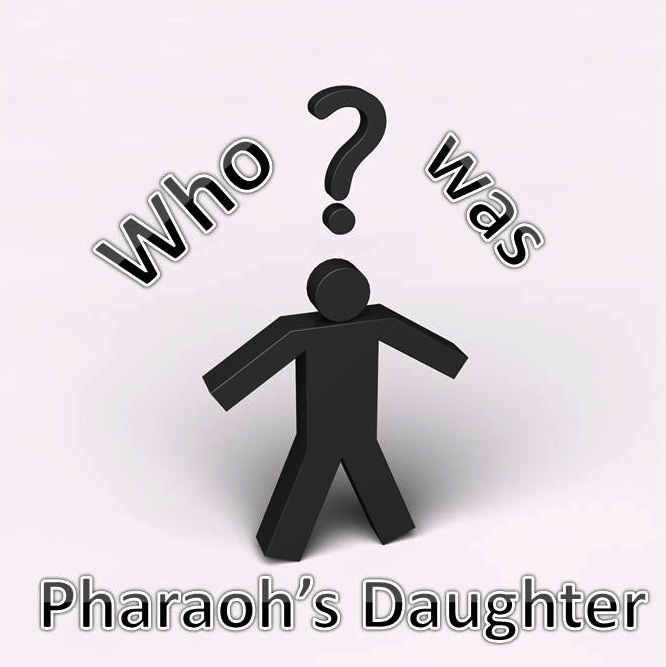 When faced with a question not specifically answered in a single verse of the Bible or a few simple Scriptures, I often turn to scholarly answers in Bible dictionaries and/or Bible encyclopedias. Easton’s Bible Dictionary is one of my favorites, and it describes three distinct Pharaoh’s Daughters:
When faced with a question not specifically answered in a single verse of the Bible or a few simple Scriptures, I often turn to scholarly answers in Bible dictionaries and/or Bible encyclopedias. Easton’s Bible Dictionary is one of my favorites, and it describes three distinct Pharaoh’s Daughters:
- the woman who adopted Moses (who Josephus calls, “Thermuthis”)
- Bithiah, wife of a Judean named, Mered (1 Chron. 4:18)
- the wife of King Solomon (1 Kings 3:1)
Not So Simple
Simple, right? Josephus said “Thermuthis,” so he must be right—not necessarily. Unfortunately, nothing about Egypt or the history of Israel’s exodus is that simple or cut-and-dried. Egyptologists disagree on dynasty-dates, rulers, and deities. Biblical scholars debate the reality of Joseph’s authority and the authenticity of Israel’s exodus. (Yes, there are Bible scholars who believe the Exodus never really happened.)
However, as I’ve searched the prolific treasures of Egyptology through the lens of the infallible, unalterable Word of God, a plausible story has risen from the jumble of conflicting facts and opinions. I don’t claim to have bested the scholars. I don’t even claim to understand all that the scholars say! But I do believe the Exodus happened. The following sections describe my efforts to create a mural with historically accurate brush-strokes on the unalterable canvas of God’s Truth:
First, Decide the Date of Exodus
Among those who embrace to Israelites’ deliverance from Egypt, two common dates for the exodus emerged:
- Early Date – 1450 B.C.
- Late Date – 1250 B.C.
Traditional theories lean toward 1250 BCE (Before Common Era—a scientific term used when intellectuals balk at the phrase, “Before Christ”), but more recent findings draw scholars to the date ca. 1450 BCE and suggest Pharaoh Thutmoses II as the king who ordered male Hebrew babies murdered. According to the early dating theory, it was Thutmoses II’s rebellious daughter, Hatshepsut, that rescued Moses.
After the death of Hatshepsut’s father, she assumed Egypt’s throne as a female Pharaoh dressed in male king’s garb—for twenty years. The reason? Her step-brother was too young to rule—or so she said. This, Hatshepsut, fulfilled all the rights and privileges of Pharaoh—until Thutmoses III came of age and “peacefully” assumed the throne.
Sounds like a FANTASTIC story, doesn’t it?
One problem.
Hatshepsut is buried in one of the most elaborate burial complexes of Egypt. Why is that a problem? Keep reading…
Will the Real Pharaoh’s Daughter Please Stand Up!
If you’ll refer to the opening paragraph, you’ll see three possible Pharaoh’s daughters. The first is “Thermuthis,” described by Josephus but found nowhere in Scripture.
Here are my rules for writing biblical novels:
- Form the story with Scripture FIRST.
- Add historical data that inevitably confirms God’s Truth.
- THEN create fiction to sew the pieces together.
Josephus’s choice has one strike against her because God’s Word doesn’t speak of her. The other two are referenced in Scripture; however, #3 doesn’t appear until Solomon’s time—so she’s out. Which leaves us with Pharaoh’s daughter #2—Bithiah, wife of a Judean named, Mered (1 Chron.4:18).
Thus the problem with the elaborate tomb complex of Hatshepsut. Would an ex-pharaoh marry a Hebrew, then die, and be buried in all the pomp of Egyptian royalty? Doesn’t fit.
Welcome to the woes of biblical novel-writing!
Let’s Explore Scripture
Let’s look deeper at this Judean, Mered, and his wife, Bithiah. Who was he, and more importantly—why would a Pharaoh’s daughter marry a common Judean? Here’s what God’s Word says:
“The sons of Ezrah: Jether, Mered, Epher and Jalon. One of Mered’s wives gave birth to Miriam, Shammai and Ishbah… (His Judean wife gave birth to Jered…Heber…and Jekuthiel) These were the children of Pharaoh’s daughter Bithiah, whom Mered had married.” 1 Chronicles 4:17-18
Scripture not only confirms that Mered married Bithiah, Pharaoh’s daughter, but also reveals they had three sons together. Oh, and by the way, Mered ALSO had a Judean wife (who also bore him three sons. (The plot thickens.)
Now, we must search for clues to see if the generations mentioned in this section line up with the time of the exodus. I turned to a well-respected Bible commentary for help:
“…two families…from Mered the son of Ezra by his two wives…From the circumstances, however, that the one wife was a daughter of Pharaoh, we may conclude that Mered lived before the exodus of the Israelites from Egypt. The name Miriam, which Moses’ sister bore, is here a man’s name. The names introduced by XXX (Hebrew letters) are the names of towns… XXX (Hebrew letters) means properly “the Jewess,” as distinguished from the Egyptian woman, Pharaoh’s daughter.” (Keil, C.F. & Delitzsch, F.; Commentary on the Old Testament, Vol. 3; Peabody, MA; 2006; pp.429-431.)
Each Step Is a Decision
Feeling relatively certain I’d followed the proverbial bread-crumbs on my biblical research path, I chose the exodus date of 1250 B.C. for the starting point of my research.
That’s right…I said the STARTING point of my research!
Now that I settled the date of the Exodus in my spirit, I began scouring the various opinions of which pharaoh actually reigned during the murderous edict and which one hardened his heart during the plagues.
I doubt you’ll be surprised by the pharaoh that hardened his heart against the plagues, but I can’t wait to tell you which pharaoh might have been the one to order the male Hebrew babies’ deaths!
Actually, I CAN wait to tell you! See you next month!
Tweet-A-Licious!



Comments 7
This is amazing! You should INCLUDE this in the book and it would give us a good place to jump off of into your story. It would give us some familiarity with who we are going to meet. Could this be a part of your introduction? Hurry up. I can hardly wait!!
Author
So glad you enjoyed it! I’d love to include ALL these interesting research tidbits–but I’d need to write another book! ha!
I do plan to mention in the Author’s Note which Exodus date I chose and the mention of Bithiah in 1 Chron. 4:17-18. But all my blog followers will know the REAL story behind the story! 😉
I agree with Mary, this has really wet my appetite to go on the next journey with you!
Author
Hooray!!!
whet my appetite. Homophone for wet, whet means sharpened.
How do I find the rest of the story? Sorry, first time viewer and low tech. I did subscribe. not familiar with blogging.
Author
No worries, Pam. Here’s the link to the next blog: https://mesuandrews.com/whos-baby-killing-meany-pharaoh-exodus-1/
Happy reading!